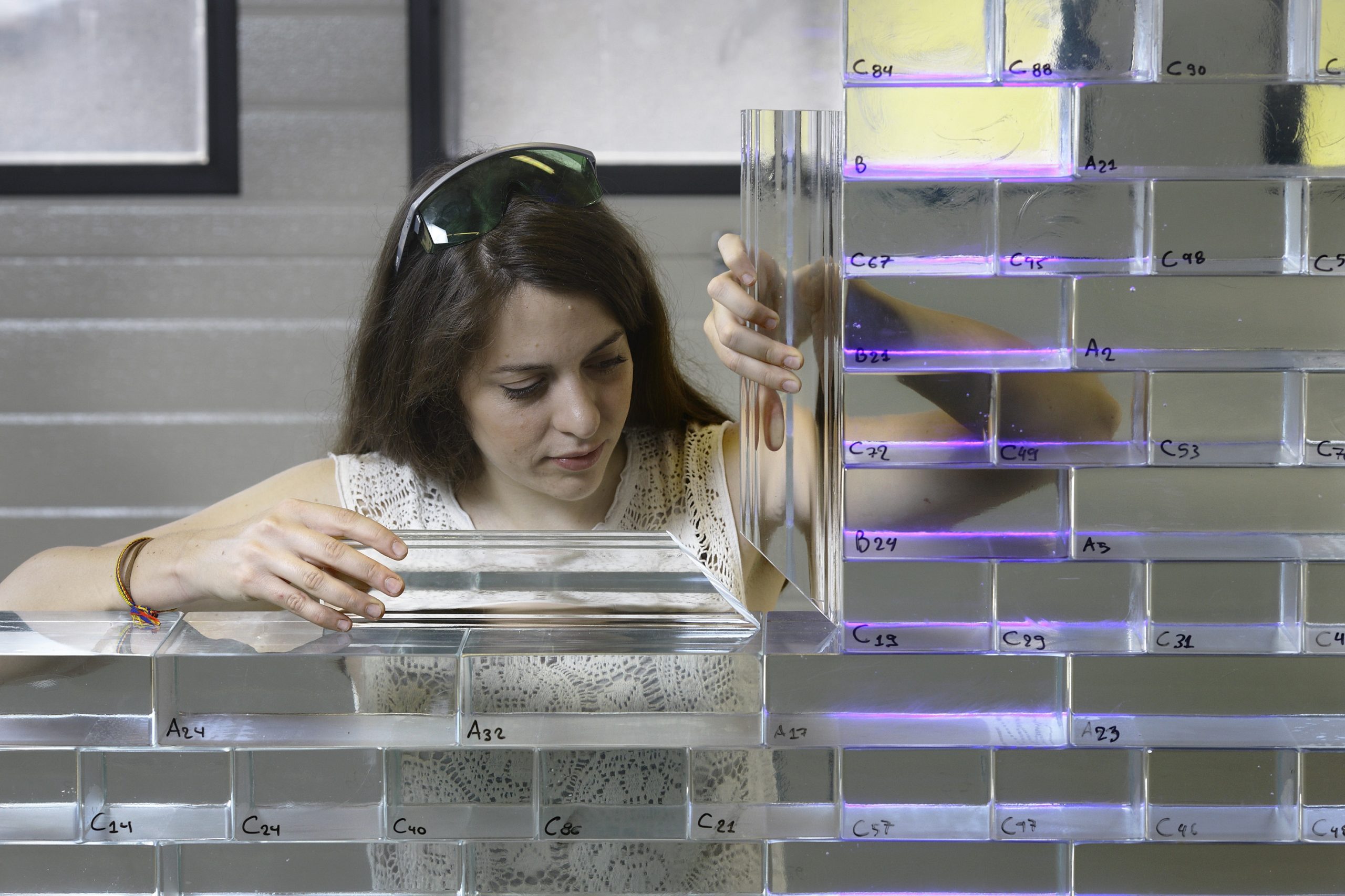Amsterdam will have a new attraction on its classy PC Hooft shopping street next autumn. One of the shops will be getting a unique glass brick wall.
“Interior walls made of glass bricks are quite common”, says Dr. Fred Veer who lectures in material science at the Faculty of Architecture. “They are usually glued together with silicone.” Making a load-bearing exterior wall however poses much higher demands on the bricks, the glue, the construction and the foundation. Once this shop’s facade is successfully erected though, Veer foresees many more unique possibilities for innovative architectures. Up until now, glass always has to be used in combination with steel, stone or another material to carry the loads.
“You could load a herd of elephants on this wall and it still won’t crack”, says Veer. Thanks to the tight tolerances in the cast-brick dimensions (less than a quarter of a millimetre) and the high-quality cement and precise cementing, the glass wall segment in the lab has survived a 200 tonnes pressure test, as well as an attack with a sledgehammer.
The shop wall will measure 10 by 10 metres. The bricks are 23 centimetres deep and wide and 6.5 centimetres high. The higher density of a glass wall compared to a brick one (2400 kg/m3 instead of 1800 kg/m3) necessitated reinforcements to the foundation.
An extra difficulty with this particular project is the monument status of the shop. Regulations say that when brickwork is replaced, the original brick size and masonry patterns must to be maintained. “Basically you apply a high-tech material in a 19th century wall”, say Veer.
In this project, TU Delft works with MRVDV architects from Rotterdam, ABT glass constructors and Poesia from Venetia, which manufactures the special glass bricks.



Comments are closed.